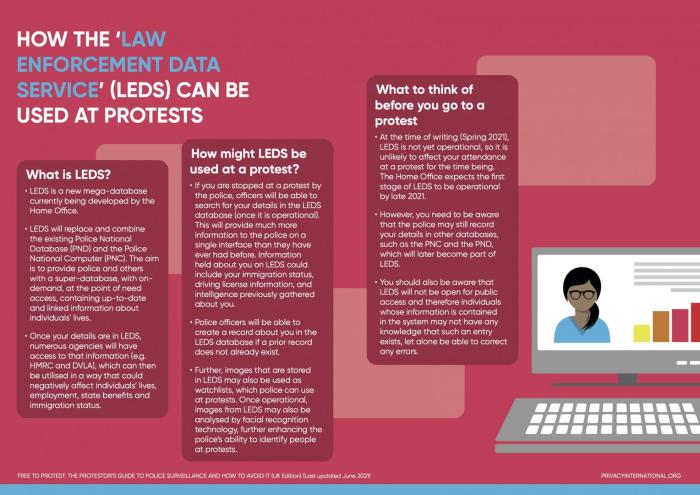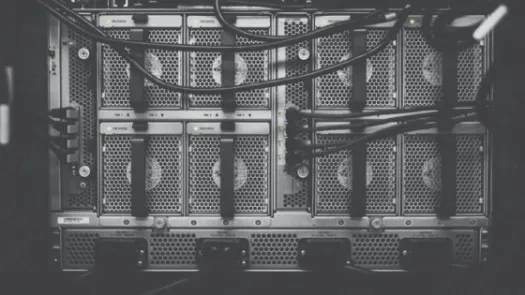
How the 'Law Enforcement Data Service' (LEDS) can be used at protests
This guide explains how policing databases can be used at a protest and negatively affect individuals' lives (UK edition)
Explainer
Post date
5th May 2021
Key points
- The UK Law Enforcement Data Service (LEDS) is a new 'super-database' that will provide the police with on-demand access to information about individuals.
- The information contained in LEDS will then be accessed by numerous agencies such as HMRC and DVLA.
- Images that are stored in LEDS may also be used as watchlists, which police can use at protests.
- LEDS will not be open for public access and therefore individuals whose information is contained in the system may not have any knowledge that such an entry exists.

What is LEDS?
- LEDS is a new mega-database currently being developed by the UK Home Office.
- LEDS will replace and combine the existing Police National Database (PND) and the Police National Computer (PNC). The aim is to provide police and others with a super-database, with on-demand, at the point of need access, containing up-to-date and linked information about individuals’ lives.
- Once your details are in LEDS, numerous agencies will have access to that information (e.g. HMRC and DVLA), which can then be utilised in a way that could negatively affect individuals’ lives, employment, state benefits and immigration status.
How might LEDS be used at a protest?
- If you are stopped at a protest by the police, officers will be able to search for your details in the LEDS database (once it is operational). This will provide much more information to the police on a single interface than they have ever had before. Information held about you on LEDS could include your immigration status, driving license information, and intelligence previously gathered about you.
- Police officers will be able to create a record about you in the LEDS database if a prior record does not already exist.
- Further, images that are stored in LEDS may also be used as watchlists, which police can use at protests. Once operational, images from LEDS may also be analysed by facial recognition technology, further enhancing the police's ability to identify people at protests.
What to think of before you go to a protest
- At the time of writing (Spring 2021), LEDS is not yet operational, so it is unlikely to affect your attendance at a protest for the time being. The Home Office expects the first stage of LEDS to be operational by late 2021.
- However, you need to be aware that the police may still record your details in other databases, such as the PNC and the PND, which will later become part of LEDS.
- You should also be aware that LEDS will not be open for public access and therefore individuals whose information is contained in the system may not have any knowledge that such an entry exists, let alone be able to correct any errors.
You can download this guide as a jpeg by saving the image below, or by downloading the pdf version in 'Attachments'.
Our campaign
Our fight
Target Profile




